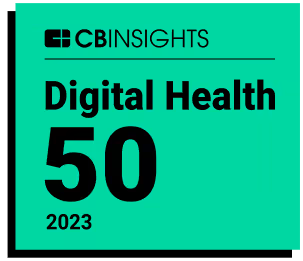If you’ve spent time working in value-based care, then you know how important it is to get risk adjustment right. But getting it right isn’t just about how you approach HCC coding, but also when. While many healthcare organizations still mostly code retrospectively, prospective coding offers major benefits.
To shed light on how you can realize those benefits fully, we recently teamed up with AMGA for an informative webinar: How prospective risk adjustment fuels accuracy, efficiency, and financial growth. In case you missed it, here are five of the most important lessons from our session.
Prospective coding is about more than saving time and money
Much of our discussion centered on the differences between three approaches to HCC coding: retrospective (after claims are filed), prospective (at or before the point of care), and concurrent (after care has been provided, but before the claims are filed). One key benefit of prospective coding highlighted by our panelists is its ability to save time and money for healthcare organizations. Rather than requiring clinicians and/or coders to review large amounts of information retrospectively, prospective risk adjustment can simplify the process of identifying diagnoses – especially when assisted by an AI-powered tool.
“Once the patient has left, once the claim is closed, once the encounter is closed, then I have to go and correct [any inaccurate or missing HCC codes]. And I have to ask a lot of people for help to do that,” said Dana McCalley, VP of Valued-Based Care at Navina, recalling her previous experience as a healthcare administrator dealing with retrospective risk adjustment. “If you shift everything to prospective, you get it right the first time. The true burden of illness for that patient is presented at that time to the clinician, and the clinician has all the tools that he or she needs to really drive and improve outcomes for those patients.”
“You’ll notice when you move things upstream, the administrative cost will be less. The coding you have to do on retrospective is much, much bigger,” said Jonathan Meyers, CEO of Seldon Health Advisors. “In terms of forecasting, understanding your patient population as soon and as early as possible will help you to understand what resources you need and what costs are involved.”
Prospective coding improves the quality of patient care
As significant as the financial benefits of prospective coding can be, another advantage is how it empowers clinicians to improve the quality of care they deliver. When clinicians are more aware of a patient’s HCC codes, they have a fuller, clearer, and more accurate picture of the patient’s health as a result. And when AI makes it easy for them to get the information they need conveniently at the point of care, they have an opportunity to pay closer attention to the patient's needs rather than administrative tasks.
Additionally, having earlier access to the information provided by HCC coding can help healthcare organizations schedule patients’ appointments in a way that reflects the seriousness of their needs.
“In a couple of companies we've leveraged Navina at the point of care as our pre-visit tool,” said Gary Pilling, Senior Vice President of Central Operations Strategy at agilon health. “With that, we could basically prioritize clinically relevant and supported suspects, which then helped us change how we schedule patients and make sure that we're getting to the right patients at the right time. That was a big change for both of my organizations that we did that with.”
CMS-HCC V28 heightens the need for prospective coding
Another key factor incentivizing the use of prospective HCC coding with AI-powered tools is the shift from CMS-HCC V24 to V28, which has resulted in lower revenue for many organizations.
“V28 forces you to reduce costs and to be more efficient in what you do, whether it be at the point of care, whether it be with your coding team, or even sales and marketing. [V28] just creates less revenue for all of us to work with. And so the point is, you have to be much more efficient in the process,” said Gary Pilling. “How do you get more efficient? Well, you become more strategic. And if you're a big organization, you have to be able to scale well. The way to do that is through tech and to be purposely driven with data, and being able to understand what the data's telling you.”
Always code responsibly, and keep RADV audits in mind
Whether coding prospectively or retrospectively, organizations would do well to focus on always coding accurately. One important safeguard is the Risk Adjustment Data Validation (RADV) program, which audits Medicare Advantage programs to increase accountability and prevent overcoding and overpayment. As our discussion highlighted, the Centers for Medicare & Medicaid Services (CMS) recently announced a dramatic expansion of RADV audits, from roughly 60 to roughly 550 MA plans per year. The financial consequences of discovered violations can be serious.
With that in mind, Jonathan Meyers recommended auditing your organization’s own HCC coding and making sure to delete codes that are not adequately justified by evidence. “From a plan perspective, [removing diagnoses lacking adequate supporting documentation] is critical because then you're proactively making sure your [RADV audit] exposure is reduced,” he said. “CMS does look kindly upon the fact that you've taken action to do certain things and remediate issues that may have occurred, even if you weren't able to do it perfectly… You should go into RADVs pretty confident that you've already done the legwork.”
AI is essential for shifting from retrospective to prospective coding
As helpful as prospective HCC coding can be for healthcare organizations, first it must be feasible – and that requires the use of an AI-powered risk adjustment tool. Only by having a reliable and efficient way to utilize patient information can you enjoy the full financial and temporal benefits of prospective coding, ensuring that your coding is complete and accurate, and improving the quality of care you offer.
More specifically, our discussion explored the importance of reliably providing documentation for every suspected diagnosis suggested by an AI engine, and how this kind of evidence-based approach encourages clinicians to take those suggestions seriously. “One of the things that's super important – is [asking], ‘Is the information relevant?’” said Gary Pilling. “Using the Navina platform at the point of care for us, we were able to [answer questions like], ‘Where is this [information, including suspected diagnoses] coming from? What's the clinical evidence that's supporting it? And did it come from outside our organization, or did it come from inside our organization?’”
{{text-banner}}



.png)






.png)













